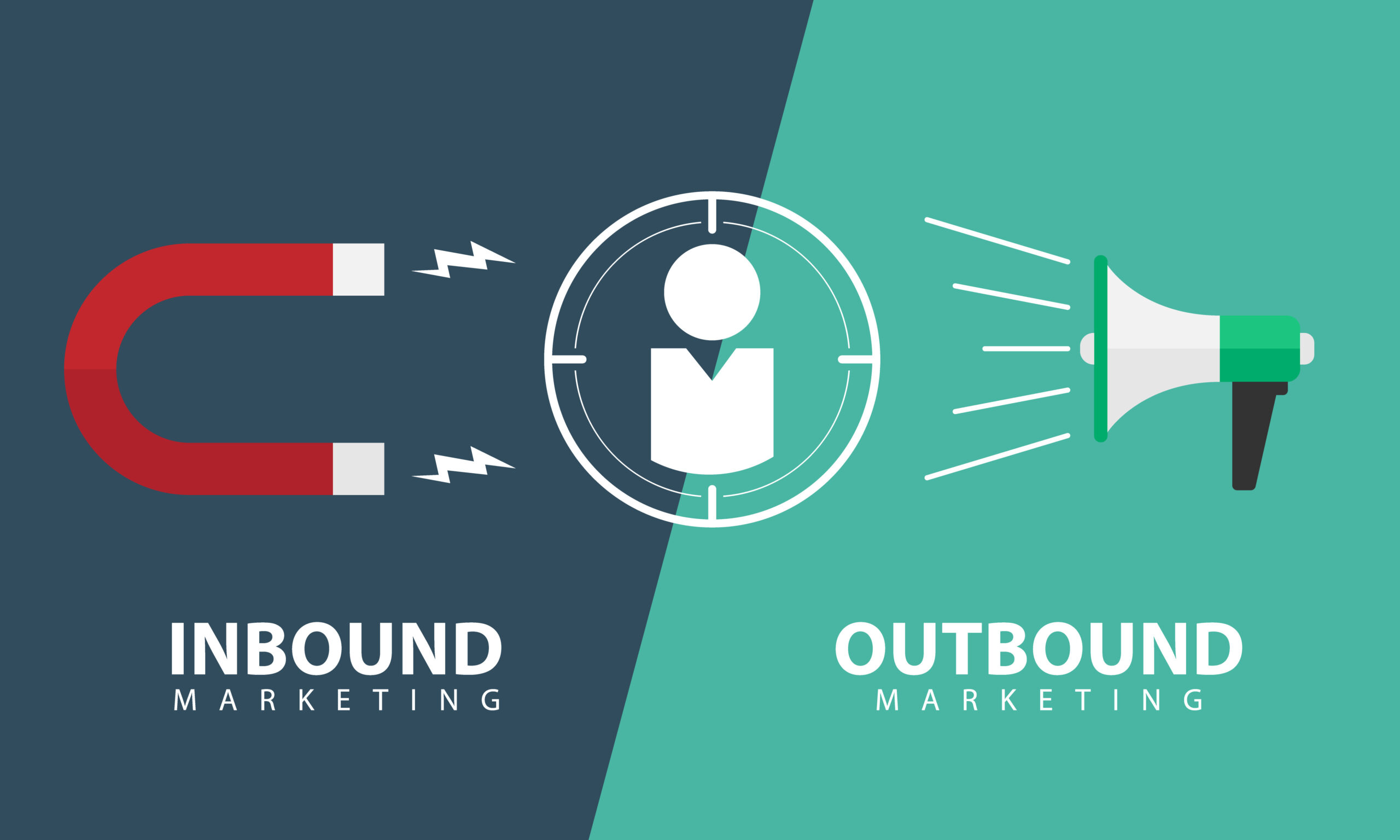
How to Generate More Leads with Inbound Marketing
What is Inbound Marketing?

Inbound marketing is a customer-centric approach that focuses on attracting potential customers by providing valuable content and experiences tailored to their needs. Unlike traditional outbound marketing, which relies on interruptive tactics like cold calls, TV ads, and direct mail, inbound marketing draws people in organically. It’s about earning attention rather than demanding it.
The core principles of inbound marketing—attracting, engaging, and delighting customers—are designed to build trust and foster long-term relationships. The “attract” phase involves creating content that resonates with your target audience, such as blog posts, videos, or social media updates. The “engage” phase focuses on nurturing leads through personalized communication and solutions to their problems. Finally, the “delight” phase ensures customers remain satisfied and loyal by providing ongoing support and value.
Inbound marketing is particularly effective for lead generation because it aligns with how modern consumers make purchasing decisions. Today’s buyers are more informed and prefer to research products and services on their own terms. By offering helpful, relevant content at the right time, businesses can position themselves as trusted advisors, making it more likely that potential customers will convert into leads and, eventually, loyal clients.
Table of Contents
Understanding Your Target Audience

To succeed with inbound marketing, you must first understand your target audience. This begins with creating detailed buyer personas—semi-fictional representations of your ideal customers based on data and research. A well-crafted buyer persona includes demographic information, behavioral traits, pain points, goals, and buying preferences. For example, if you’re a software company, one of your personas might be “Tech-Savvy Tom,” a mid-level IT manager looking for cost-effective solutions to streamline operations.
Understanding your audience’s pain points and goals is crucial for guiding your inbound strategy. What challenges are they facing? What solutions are they seeking? By answering these questions, you can tailor your content and messaging to address their specific needs. For instance, if your audience struggles with time management, you could create a blog post titled “10 Productivity Hacks for Busy Professionals.”
Gathering audience insights is easier than ever, thanks to tools like surveys, website analytics, and social listening platforms. Surveys allow you to ask direct questions about your audience’s preferences and challenges. Analytics tools like Google Analytics can reveal which pages or content types resonate most with your visitors. Social listening tools, such as Hootsuite or Brandwatch, help you monitor online conversations to uncover trends and sentiments about your industry or brand.
Creating High-Quality, Targeted Content
Content is the backbone of inbound marketing. It’s what attracts potential leads to your website and keeps them engaged. High-quality, targeted content not only builds trust but also positions your brand as an authority in your industry.
To generate leads effectively, focus on creating a variety of content types that cater to different preferences and learning styles. Blog posts are excellent for driving organic traffic and answering common questions. eBooks and whitepapers work well for in-depth topics and can be gated behind lead capture forms. Videos are highly engaging and perfect for explaining complex concepts or showcasing your products. Infographics are ideal for presenting data in a visually appealing way.
It’s also essential to align your content with each stage of the buyer’s journey. During the awareness stage, create educational content that addresses your audience’s pain points, such as “How to Choose the Right CRM for Your Business.” In the consideration stage, offer comparison guides or case studies to help them evaluate their options. For the decision stage, focus on content like product demos, testimonials, or free trials to encourage conversions.
Optimizing Your Website for Lead Generation
Your website is the hub of your inbound marketing efforts, so it must be optimized for lead generation. A user-friendly, mobile-optimized website ensures visitors can easily navigate and engage with your content, regardless of the device they’re using.
Landing pages play a critical role in capturing leads. These pages should be designed with a single goal in mind—encouraging visitors to take a specific action, such as downloading an eBook or signing up for a webinar. Use compelling headlines, concise copy, and visually appealing designs to keep visitors focused.
Lead capture forms are another essential element. Keep them simple and only ask for the information you truly need, such as name and email address. Including a clear and persuasive call-to-action (CTA) is equally important. For example, instead of a generic “Submit” button, use action-oriented phrases like “Get My Free Guide.”
Search engine optimization (SEO) is vital for driving organic traffic to your site. Conduct keyword research to identify terms your audience is searching for, and incorporate these keywords naturally into your content. Additionally, optimize meta descriptions, headers, and image alt text to improve your site’s visibility in search engine results.
Leveraging Social Media for Lead Generation
Social media platforms are powerful tools for amplifying your inbound marketing efforts. They allow you to share valuable content, engage with your audience, and build brand awareness.

To generate leads, focus on sharing content that provides value, such as blog posts, videos, or industry insights. Use eye-catching visuals and compelling captions to grab attention. Engaging with your audience is equally important—respond to comments, answer questions, and participate in relevant conversations to build trust and rapport.
Running targeted ad campaigns on platforms like Facebook, LinkedIn, or Instagram can also help you reach specific audience segments. For example, you could create a LinkedIn ad targeting HR professionals with a free guide on “Best Practices for Employee Onboarding.”
Tracking social media metrics, such as engagement rates, click-through rates, and conversions, is essential for refining your strategy. Use analytics tools provided by the platforms or third-party tools like Sprout Social to measure performance and identify areas for improvement.
Using Email Marketing to Nurture Leads
Email marketing is a cornerstone of inbound marketing, particularly for nurturing leads. It allows you to deliver personalized, value-driven content directly to your audience’s inbox.
To create effective email campaigns, focus on providing value rather than pushing sales. For example, you could send a weekly newsletter featuring industry tips, case studies, or exclusive offers. Personalization is key—use the recipient’s name and tailor the content to their interests or stage in the buyer’s journey.
Segmentation and automation can significantly enhance your email marketing efforts. Segment your email list based on criteria like demographics, behavior, or purchase history to ensure your messages are relevant. Use automation tools to send timely emails triggered by specific actions, such as downloading a resource or abandoning a shopping cart.
Measuring and Analyzing Your Inbound Marketing Efforts
To ensure your inbound marketing strategy is effective, you must measure and analyze its performance. Key metrics to track include website traffic, conversion rates, lead quality, and return on investment (ROI).
Tools like Google Analytics, HubSpot, and CRM platforms can provide valuable insights into your campaigns. For example, Google Analytics can show which blog posts drive the most traffic, while HubSpot can track how leads interact with your content.
Use the data you collect to refine your strategy. If a particular type of content performs well, consider creating more of it. If your landing pages have low conversion rates, test different headlines, designs, or CTAs to improve results.
Common Mistakes to Avoid in Inbound Marketing
Even the best marketers can make mistakes. Common pitfalls include neglecting SEO, overloading users with CTAs, or failing to nurture leads after capturing them.
To avoid these mistakes, ensure your content is optimized for search engines and provides genuine value. Limit the number of CTAs on a page to avoid overwhelming visitors. And don’t forget to follow up with leads—use email marketing and other tactics to keep them engaged.
Future Trends in Inbound Marketing for Lead Generation
The world of inbound marketing is constantly evolving. Emerging trends like AI-driven personalization, video content, and conversational marketing are shaping the future.
AI tools can analyze data to deliver highly personalized experiences, while video content continues to dominate as a preferred medium for consumers. Conversational marketing, such as chatbots and live chat, allows businesses to engage with leads in real-time, providing instant value.
Staying ahead of these trends requires adaptability and a willingness to experiment with new technologies and strategies.
Bonus: Tools and Resources to Boost Your Inbound Marketing Strategy
Here are some tools to streamline your inbound marketing efforts:
- Content Creation: Canva, Grammarly, BuzzSumo
- SEO: SEMrush, Ahrefs, Moz
- Email Marketing: Mailchimp, ActiveCampaign, HubSpot
- Analytics: Google Analytics, Hotjar, Crazy Egg
Each tool offers unique features to help you create, optimize, and measure your campaigns effectively.
Frequently Asked Questions
What is an example of a lead generation?
An example of lead generation is offering a free eBook on a topic relevant to your audience in exchange for their email address. For instance, a digital marketing agency might create an eBook titled “10 Proven Strategies for Generating Leads Online.” When visitors download the eBook by filling out a form, they become potential leads who can be nurtured into customers through email marketing and follow-ups.
Which are the 4 steps of the lead generation process?
The lead generation process consists of four key steps:
- Attract – Use content marketing, SEO, social media, and paid ads to drive visitors to your website.
- Convert – Capture visitor information through lead magnets such as eBooks, webinars, or free consultations.
- Nurture – Engage leads through email sequences, personalized follow-ups, and valuable content to build trust.
- Close – Guide leads through the sales funnel with targeted offers, calls-to-action, and one-on-one interactions to convert them into paying customers.
How do I generate leads?
Generating leads requires a strategic approach that aligns with your target audience. Some effective lead generation strategies include:
- Content Marketing – Blog posts, whitepapers, and case studies that provide value to potential customers.
- SEO & Paid Ads – Optimizing for search engines and running PPC campaigns to attract high-intent visitors.
- Social Media Engagement – Using platforms like LinkedIn, Instagram, and Facebook to connect with prospects.
- Email Marketing & Automation – Capturing leads through sign-up forms and nurturing them with automated email sequences.
- Landing Pages & Lead Magnets – Creating dedicated pages with strong calls-to-action (CTAs) to capture lead information.
Is lead generation a tough job?
Lead generation can be challenging, but with the right strategy, tools, and consistency, it becomes a scalable and effective process. It requires understanding your audience, creating valuable content, optimizing marketing campaigns, and leveraging automation to streamline efforts. While it may take time to refine, a well-structured inbound marketing strategy can make lead generation easier and more efficient.